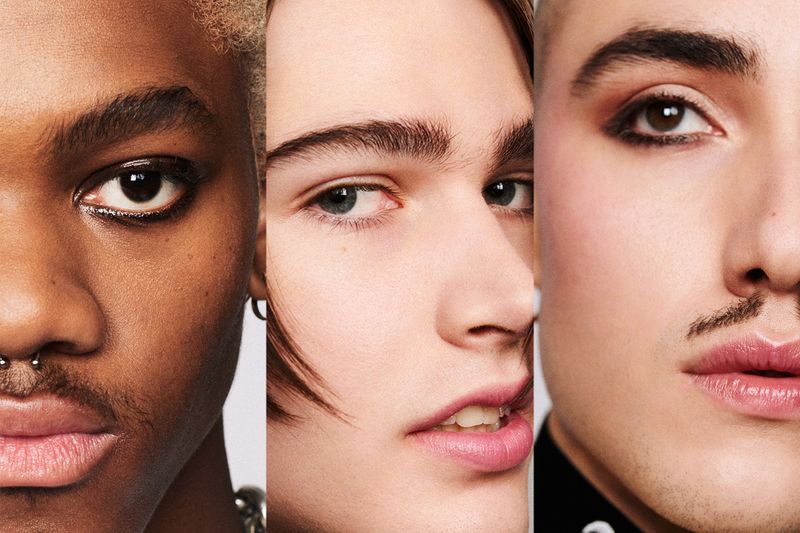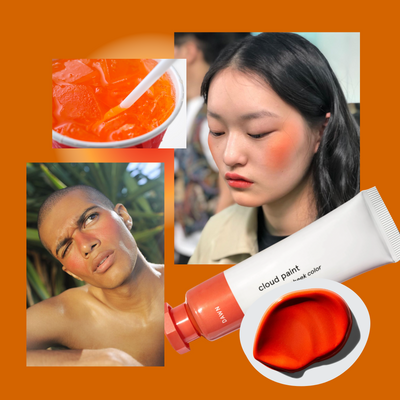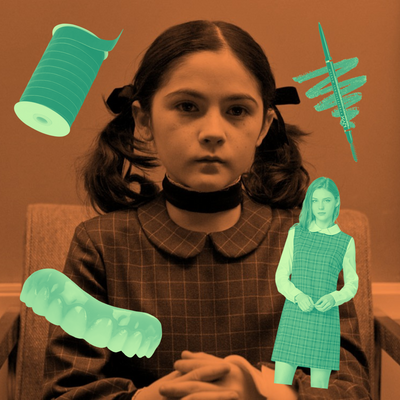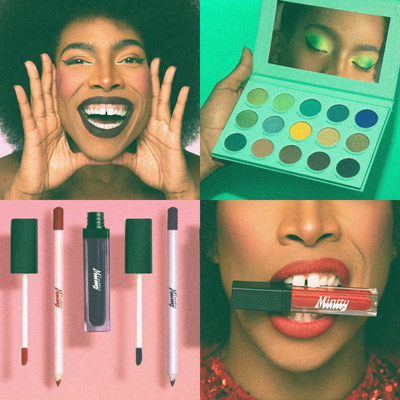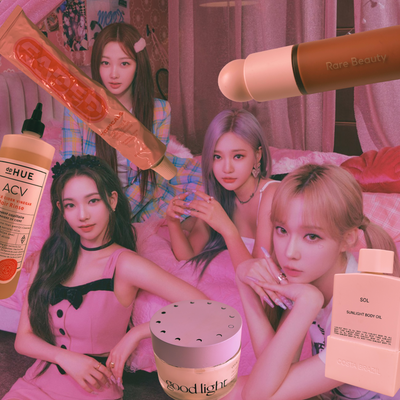In partnership

Rayne is neither he nor she, but both he and she.
And everything in between.
When we met in January for a photoshoot for Milk Makeup’s Blur Stick, Rayne wore a fitted pastel pink tank, juxtaposed with black, ‘90s-style raver-like grommeted pants. Rayne towers over at 6-feet, with broad shoulders built over many years dedicated to dancing, but the 18-year-old’s voice comes out in barely a whisper. With long, wispy brown hair, a dewy, milky complexion and soft, almond eyes, not to mention poreless skin, the teen is gentle, meek. But in photos, Rayne is anything but. It’s evident that when in front of the camera, the Canadian’s entire aura becomes larger than life, outer-worldly, a perfect, beautiful storm.
“Some days I’ll go by my masculine energy, others are more soft and feminine.”
When it rains, it pours.
Today, Rayne is proud to consider Rayne’s own identity as being completely rinsed of a gender identity based on a rigid binary. Rayne is fluid. “I go by energies,” Rayne says. “It’s really about what I’m feeling that day. Some days I’ll go by my masculine energy, others are more soft and feminine.” It’s that same energy that attracts Rayne to others. And it doesn’t matter what gender they are: “I’m into both boys and girls and can fall in love with both.”
Of course, you don’t become your authentic self overnight. It certainly doesn’t come without growing pains. Living in a small, suburban town outside of Toronto, Rayne found that fitting in wasn’t so easy.
“I had thoughts of conforming and being like everyone else,” Rayne admits. Rayne was assigned male at birth and that would have been the path of least resistance. Sometimes, as Rayne put it, it’s easier being like everybody else. Being invisible. Fitting in. Not having a target on your back.
But as time passed, Rayne felt that being boxed into the gender binary just didn’t feel right.
Rayne is one of the millions of Generation Z teens who are adopting these “new ideas” of identity while rejecting the traditional notions that a strict gender binary exists. Of course, as we know, these sentiments aren’t new at all. They’ve been a part of our culture as human beings for centuries. It’s just that now there are words to correctly verbalize one’s identity more precisely.
“We are in a gender evolution, not a revolution.”
It’s one of the reasons why gender, as of late, has been at the tip of everyone’s tongue. One need only look at headlines to find that it’s hit fever pitch on the cultural barometer.
“Teens These Days Are Queer AF, New Study Says,” a headline from Broadly reads.
“Gen Z Sees Gender Differently,” another wrote.
“Gen Z Rejects Gender Binary.”
At Harvard University, and on college campuses around the country, the term “ze” has become an additional pronoun for individuals who don’t fit the gender binary.
Social media has been trailblazing this notion for years. It was Facebook, in fact, that began offering more than 50 terms for one’s gender identity in 2014.
“We are in a gender evolution, not a revolution,” explains Dr. SJ Miller, the deputy director of educational equity supports and services at NYU, to Very Good Light. “Young people are now coming into the world now with a full understanding of gender binaries. It’s a reason why we’re seeing more people finding that they’re genderless. People are finally starting to understand that this could be their true identities.”
Joel Baum, senior director for professional development at Gender Spectrum, says gender has bubbled up into the zeitgeist not because of young people, but because of older generations who “just don’t understand.”
“Notions of non-binary identity are part of the discourse for Generation Z,” he tells Very Good Light. “There’s a much greater comfort level with those with different gender and sexualities who aren’t in the typical boxes. To them, it’s like breathing air. It’s normal. Today, it’s not hard to talk about gender diversity and non-binary language. Most in this generation already understand it. It’s older generations, even millennials, who don’t get it. That’s our problem, not theirs.”
Being outside the gender binary may be a new concept here in the States, but in places throughout the world such as Samoa, Mexico, India, among others, a third gender has been embedded within their respective cultures from what seems like the beginning of time.
“These third gender males are treated like normal citizens,” says Paul Vasey, professor and board of governors research chair in psychology at the University of Lethbridge in Canada. Vasey has been studying third gendered people for years, like the fa’afafine in Samoa and the muxe in Oaxaca Mexico.
“In the market you’ll see men, women and muxe,” Vasey says to Very Good Light. “No one’s paying special attention to them and they’re treated as regular people that one would encounter anywhere in these communities. It’s how society was able to deal with these individuals who didn’t quite fit into one gender or another.”
“Choosing to be agender or genderless is a true identity.”
As Vasey explains it, many of these individuals in the Western culture would be considered gay, cis-gender men or transgender women. It’s just a matter of perception and how different societies box in those who aren’t part of a majority population. But whatever the sexuality, we need to understand that that’s different from gender identity.
“We need to know that sex is biological,” Vasey explains. “A person’s biological status are marked by chromosomes and their genitals and can be varyingly defined. Gender, on the other hand, is a system for categorizing things based on the masculine and feminine attributes.”
But being genderless or considering oneself to be agender does not equate to rejecting gender identity altogether. Choosing to be agender or genderless is a true identity, one that Baum says is equally as valid as considering oneself male or female. Being genderless doesn’t make one invisible.
“Gender does matter,” he says. “Gender identity plays a huge factor in all of our lives. There’s a huge implication spiritually, emotionally and practically.”
With President Trump withdrawing federal protections for transgender people, it’s essential that we understand the differences between sexuality and gender, while also becoming more sensitive to our peers. After all, it was last March, when the state legislature of North Carolina issued House Bill 2 (known as HB2 or the “bathroom bill“), requiring people use public restrooms that match the sex indicated on their birth certificates. Though President Obama created a federal directive to override it, President Trump reversed that decision, putting the bill back in place, making it a local/state-level issue once again. States like Texas are now trying to follow suit with their own version, called SB6.
Needless to say, the future generation, like Rayne, counts on a world that’s more inclusive, with compassion and understanding, to ensure they have all of the equal rights they deserve.
“Gender does matter.”
On an afternoon in January, Very Good Light and Milk Makeup brought seven young people together to ask them what gender means to them. Some say that gender doesn’t define them, while others said it’s everything to them. In this original Very Good Light and Milk Makeup project, these seven diverse individuals – some straight, some gay, some trans, some genderless – came together to talk about identity. From a video, photographs and interviews, they speak their own truths on their own gender identities. Here they are speaking in their own words on how they blur the lines.
In their own words …
Eric Stone Carson, 18
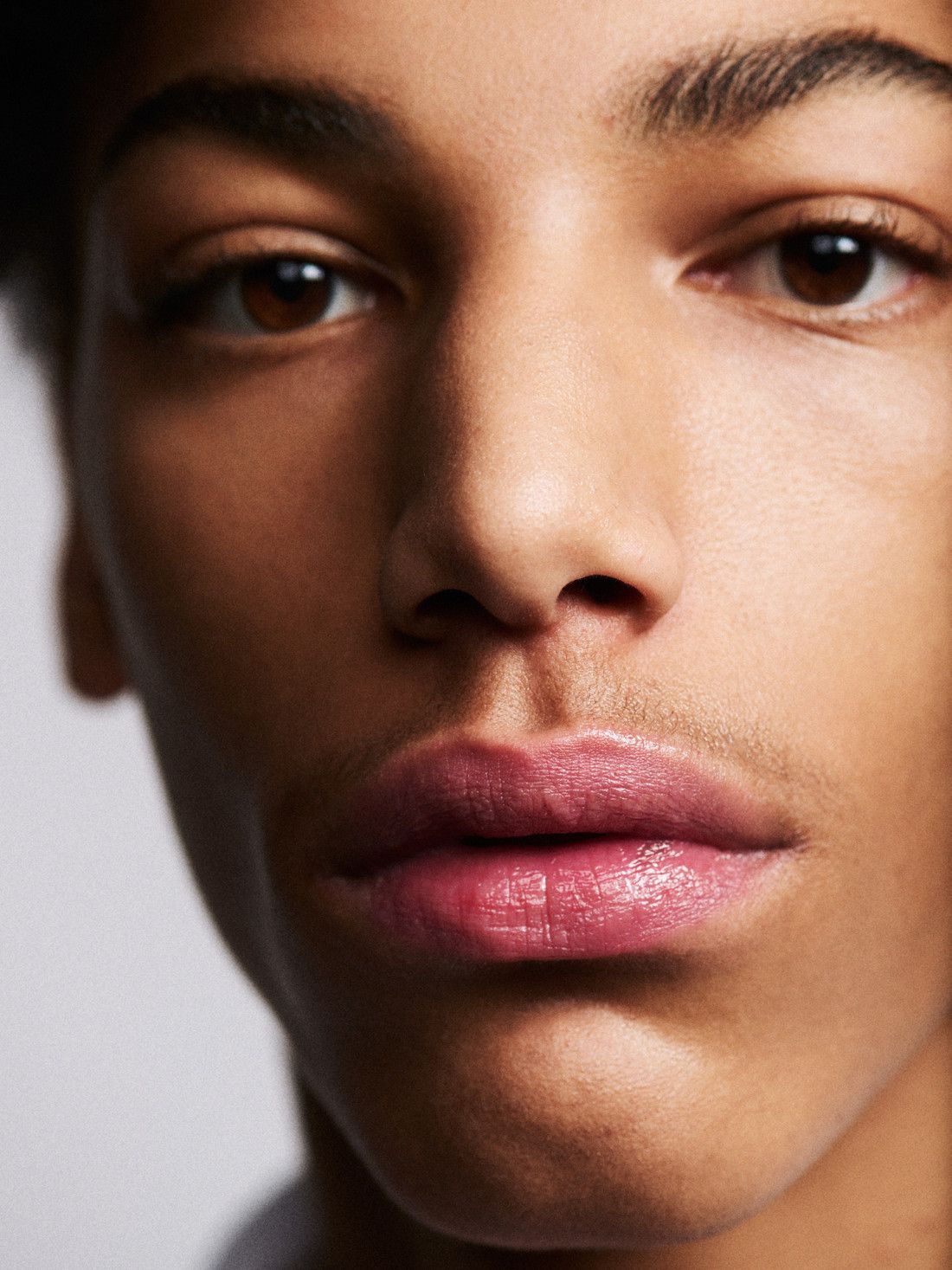
Being different in black culture isn’t a good thing. Growing up in Atlanta with three sisters, my family automatically thought I’d be gay. They didn’t want me to be. I’m a straight male but deep down inside I’ve always been like, anyone can be whoever they want to be.
But growing up in a black community meant you had to act a certain way. I tried to fit that norm. I was an athlete, I played basketball. All those kinds of stuff. I tried hard to fit in. I dressed in preppy outfits, in polos, like everyone else at my suburban Atlanta high school. I thought that that’s what I was supposed to look like though inside that wasn’t how I wanted to dress. Deep down, I was scared with how people would look at me if I cared about fashion.
And maybe that is why I try to shy away from sports now that I’m in New York, because I felt like everybody was just so super hypermasculine and close-minded.
When it comes to my own identity, I’d say I’m a boy transitioning into a man. I feel that whatever it is, whatever your own identity, it’s just self expression. Coming to New York as a model opened up my eyes to how diverse the world is. It’s about not only accepting someone but embracing those who are different from you.
In New York City I’m now seeing a lot of people wearing clothes that I wanted to wear and they’re doing so bravely. There are guys who wear makeup. It shouldn’t matter what they wear on their bodies or their faces. People will always have their own opinions. If they’re judging someone else that’s because they’re going through some things. That’s on them. I want to continue being a straight ally to everyone else and hope that culture will continue to change.
Dagsen Steele Love, 16
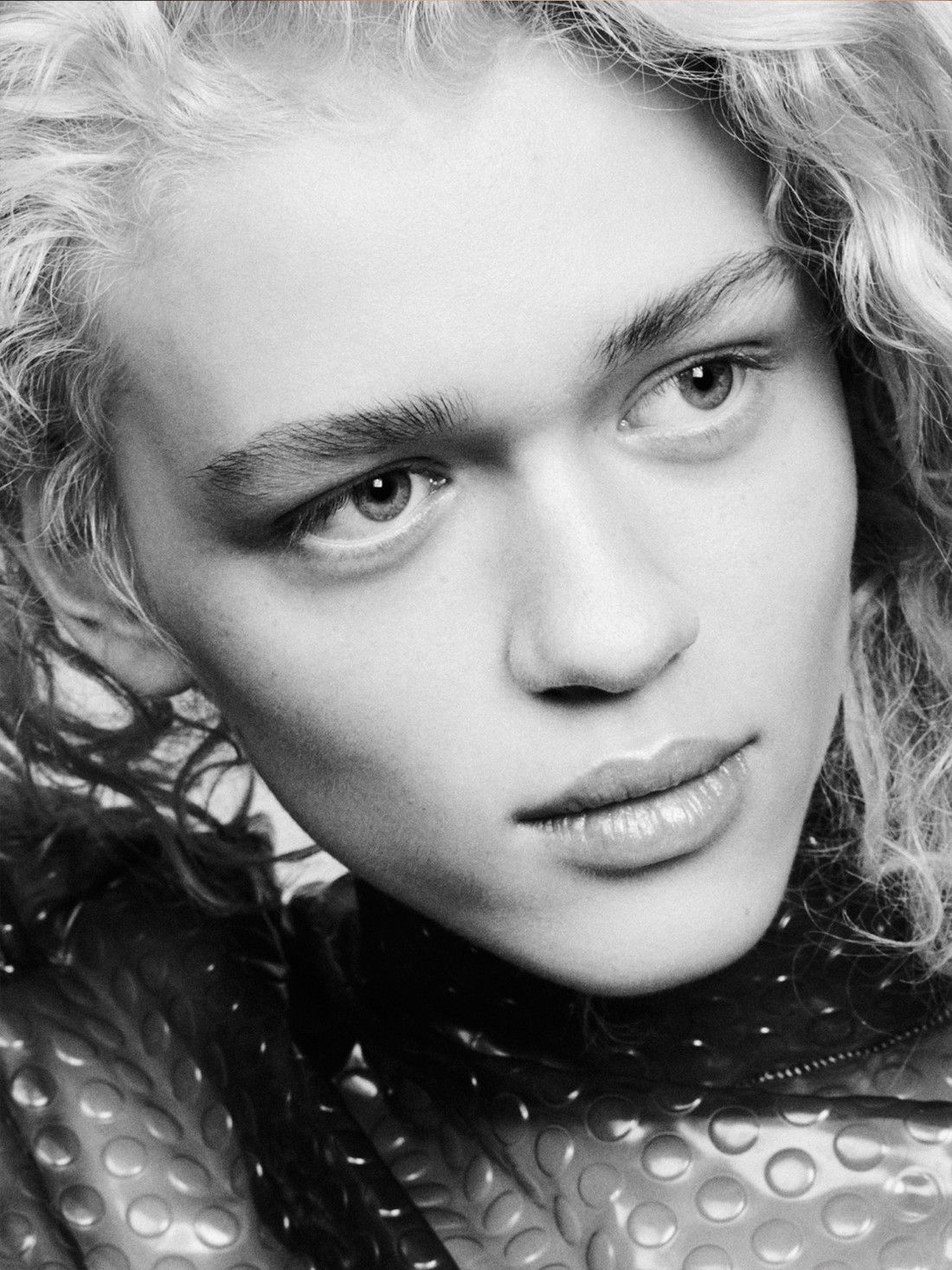
Gender and sexuality are on a spectrum. They’re also useless.
I’d say that most of society wants to solve who you are and put you in a box. It all doesn’t matter. It doesn’t exist. They’re social constructs. You can be who you want to be. Like for me, I wear women’s clothes because they fit better. I think you can be a man, if you feel like a man. If you’re a man and you want to wear dresses, then that’s cool. Why can’t you be yourself?
When I was younger, I thought I was bisexual. Then, I realized that sexuality doesn’t really matter, either. I am more attracted to women, but i wouldn’t have any problem being attracted to a man if I really liked him.
Who I am made me stick out from the rest of my classmates in Phoenix, Arizona.
I was really insecure around the time when I was 14 and 15. I hated school. I had a lot of social anxieties and stuff. And I started being way more outgoing and talking to people and just made me realize that no one has to get you. Everyone who you think is judging you is dealing with their own issues. Or if they do judge you then they just hate themselves. Most people are like that. I enrolled in online classes because I couldn’t take school any more. Doing the homework and academics just wasn’t for me. I just didn’t care. I don’t think I’m a rebel, I’m just doing me.
Marcelo Gutierrez, 22
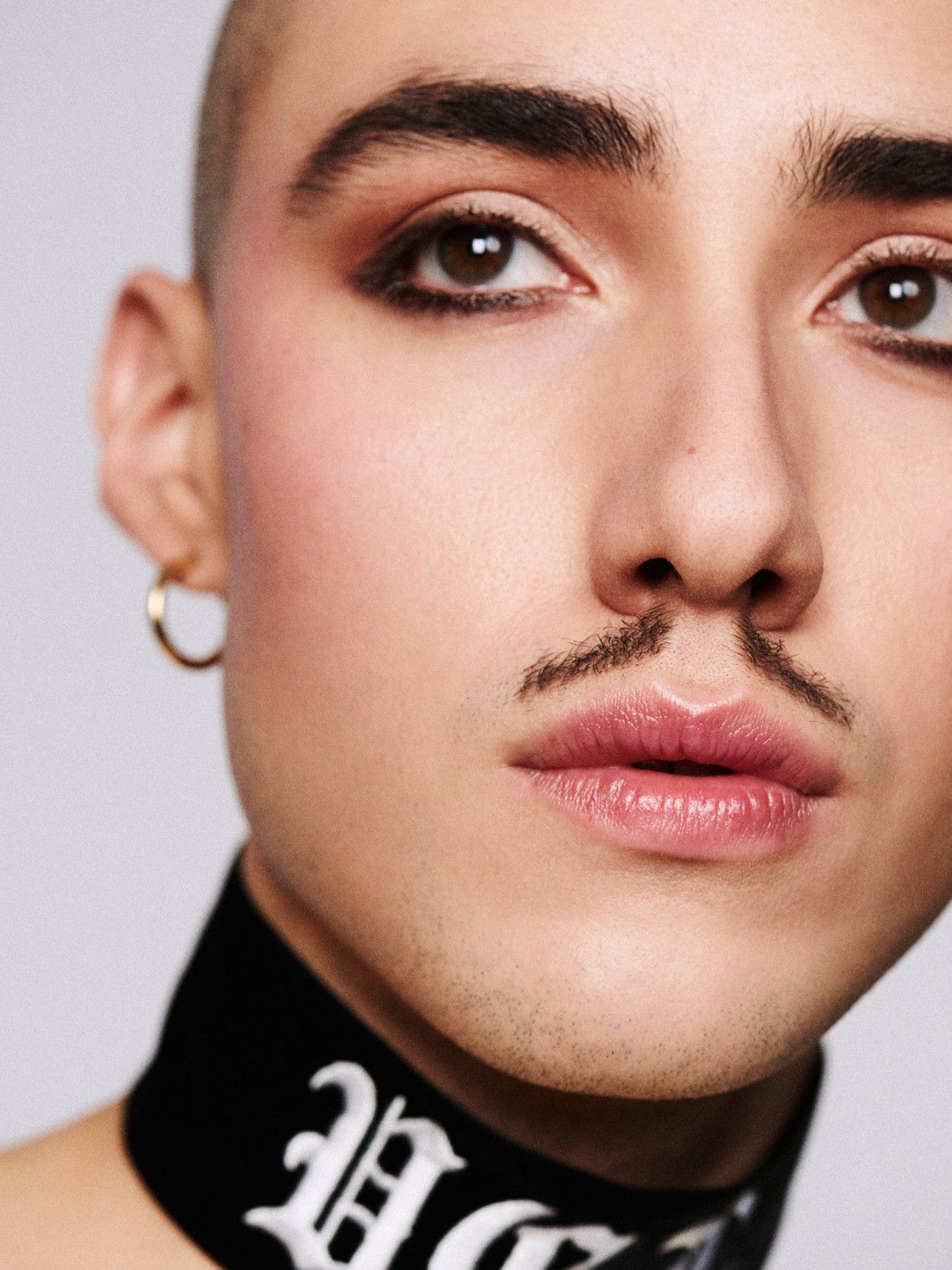
I’m a minority in a multitude of ways. I’m a refugee, an immigrant and gay. When I was younger, I didn’t consider gender. I didn’t know how different I was. I always played around as female characters but knew that I was genetically a boy.
Today, I identify as male but I am very in tune with what we call masculine and feminine attributes. But really, it makes me uncomfortable to even have to say “masculine” and “feminine.” What exactly do those words even mean?
To me, feminine characteristics are attributed to romance, vulnerability and emotion. I am someone who is very romantic. I write a lot. I am very emotional person and those are considered negative attributes in our society. For some reason, that goes back to sexism. In gay culture, it’s so “masc4masc.” When you’re any kind of “feminine,” then that can be seen as a flaw. In its essence, that goes down to why something that is considered feminine is a flaw or unattractive.
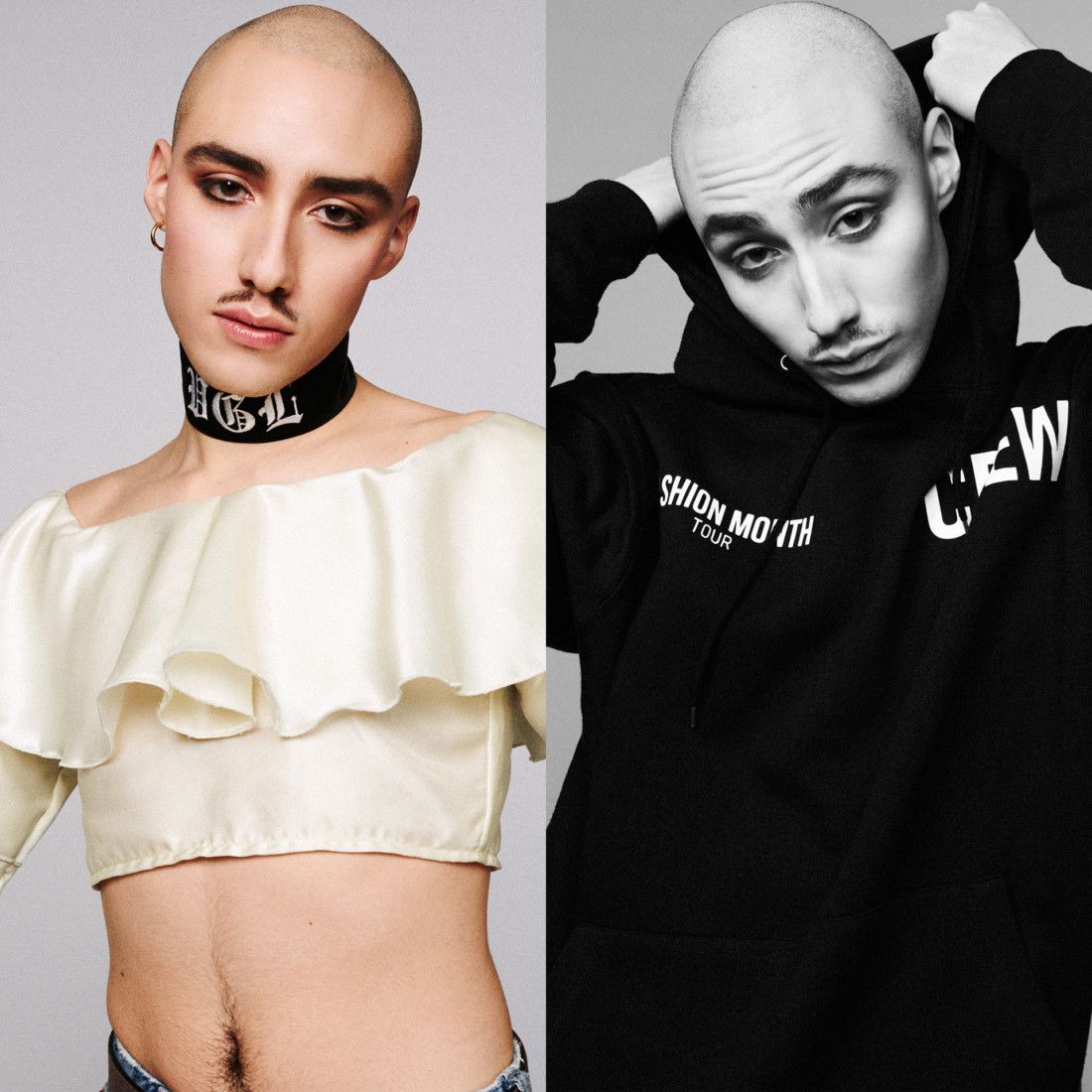
Being emotional shouldn’t be considered feminine. That should just be considered human. When we distinguish characteristics of masculinity and femininity, that means that there is a priority of one or the other. It goes back to the fact that there’s only one race – the human race. There is no masculine, there is no feminine. There is only human. That’s means being layered, complex, individual. It’s made up of so many little things in so many variables. That’s beautiful.
Avie Acosta, 21
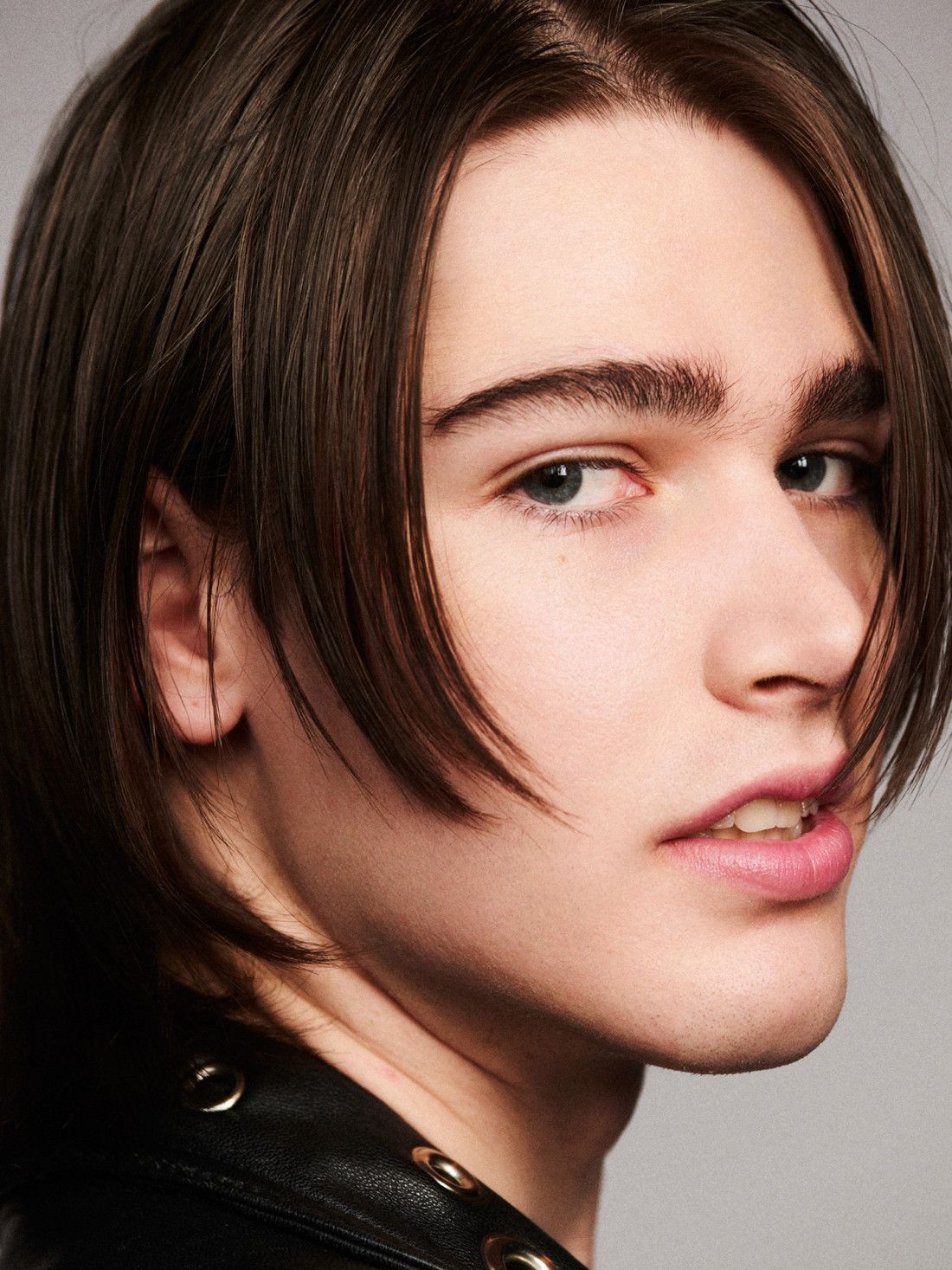
My brand is #unoffendable.
Growing up in Oklahoma I had a hard time with the concept of gender. I always played sports. I was a skateboarder. I roughhoused with football. But I also loved to wear skirts and dresses. I played with makeup and had my nails painted at sleepovers. Coming into my own later on as a woman, was an interesting experience in Oklahoma.
In retrospect, after all these years, I was fighting for myself a little too hard. I used to be a monster. I was this tough feminist girl that was like, “you respect me, refer to my gender correctly, etc.” But it got me absolutely nowhere. It was the most draining process to try to get people to understand you.
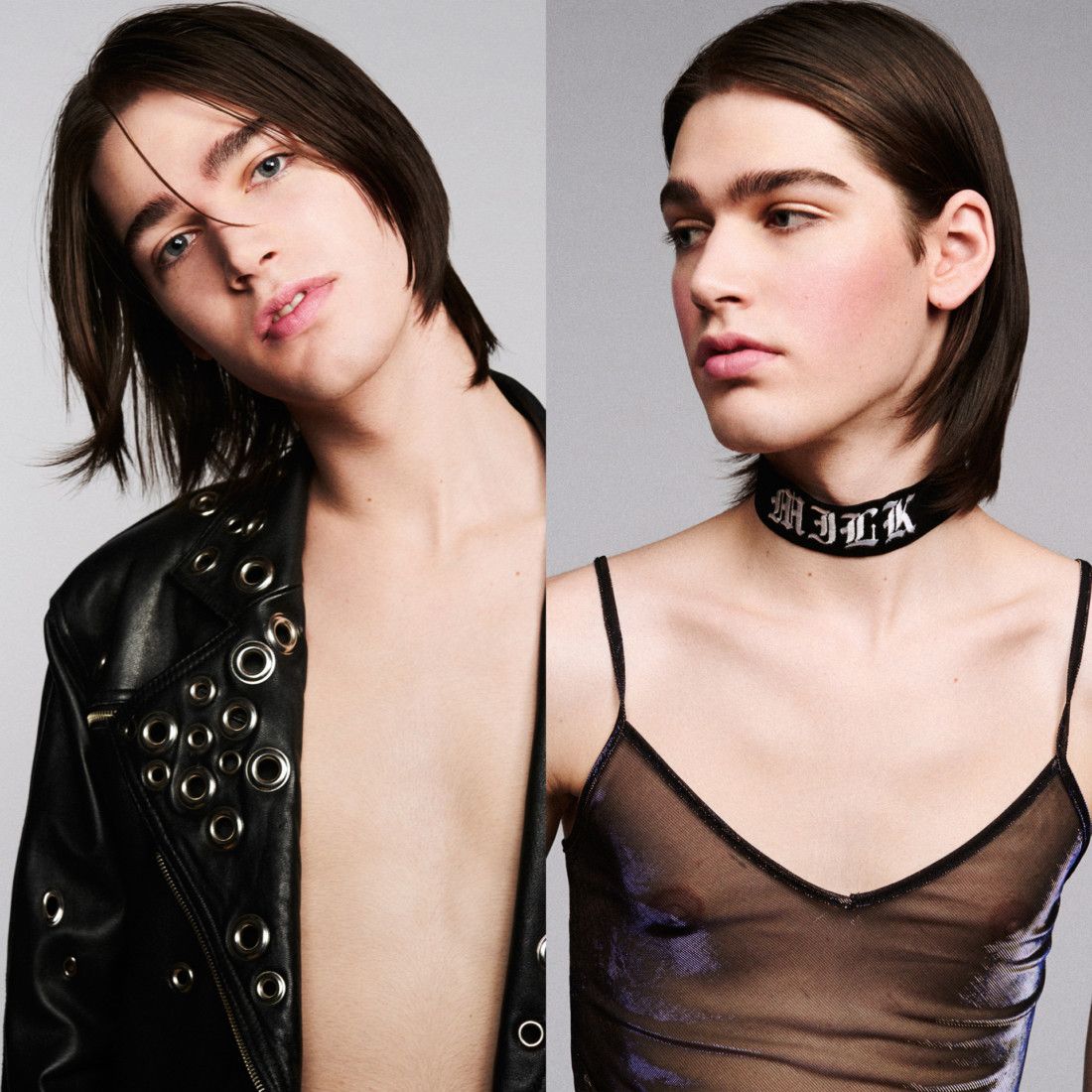
It consumed my life where I couldn’t talk about anything but gender and social politics. It brought so much negativity. Gender was a roadblock, a barrier, and a hurdle that I had to overcome. Everyone is trying to figure out who they are and I think that this conversation sometimes comes off as abrasive. It’s one-sided. It’s like what I was a few years ago, repeating myself over and over again.
I get it. The binary is real. Our entire world is set up with a binary. We think in binary. So it’s not just gender. Every concept that has two extremes. That’s just how the world is set up and I feel like trying to go against that hasn’t worked in our favor. With those who don’t understand, we can’t continue preaching to them and meeting deaf ears. It’s not getting anywhere because there has to be a common ground. We need to have empathy.
I’ve come to a point in my own life that whatever someone says to me I’m not going to get offended. There’s negativity but I don’t have to partake. There’s real power to that. There’s real power when you don’t let it get to you.
Eddy LeRoy Jr., 18
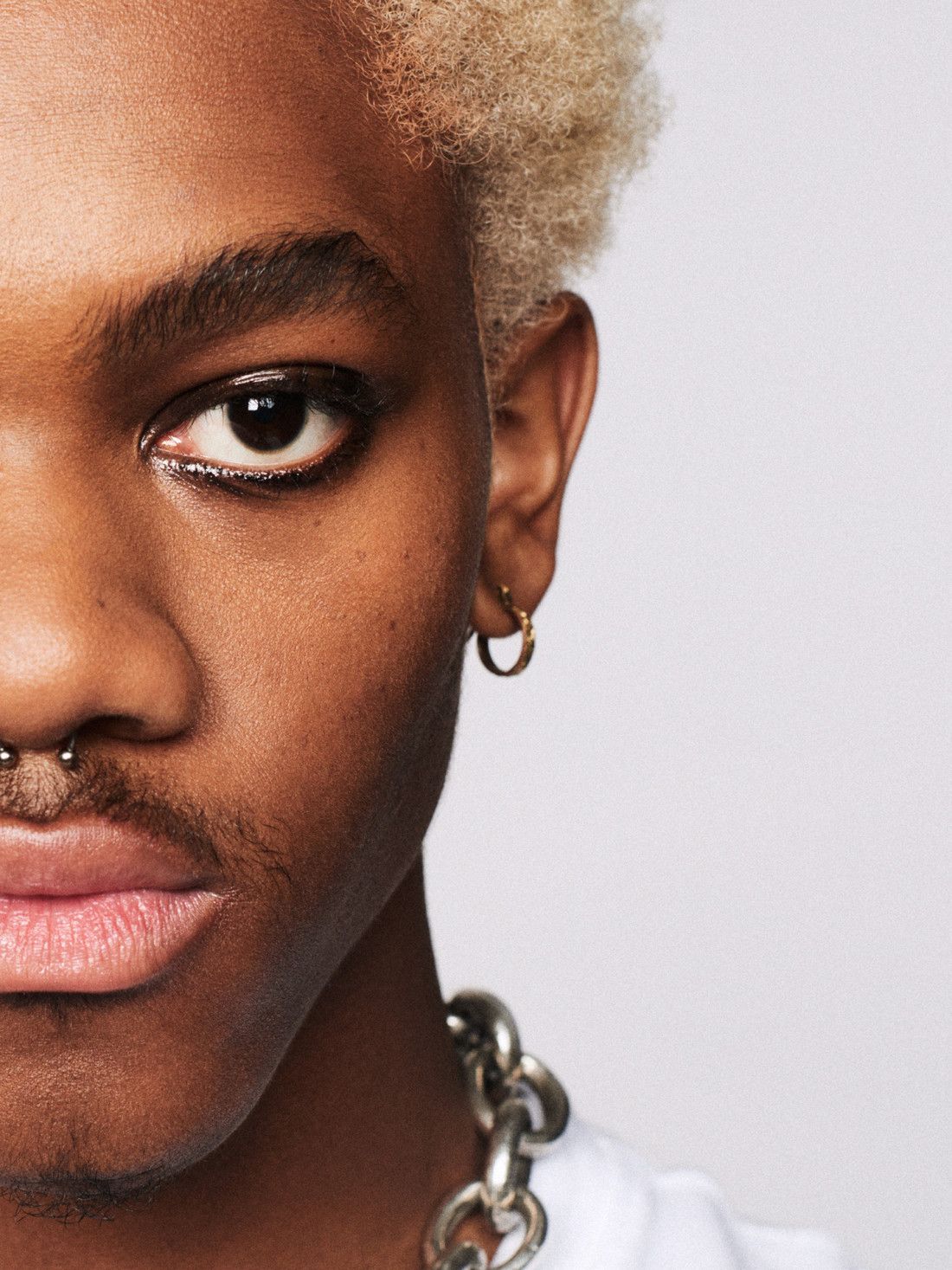
If we’re going to try to define manhood in a traditional sense with sports and all that, okay, I played sports, too. I ran track and played football in high school and I was better than everyone else. Why is it that society deems a man less than if he’s different? Or if he cries?
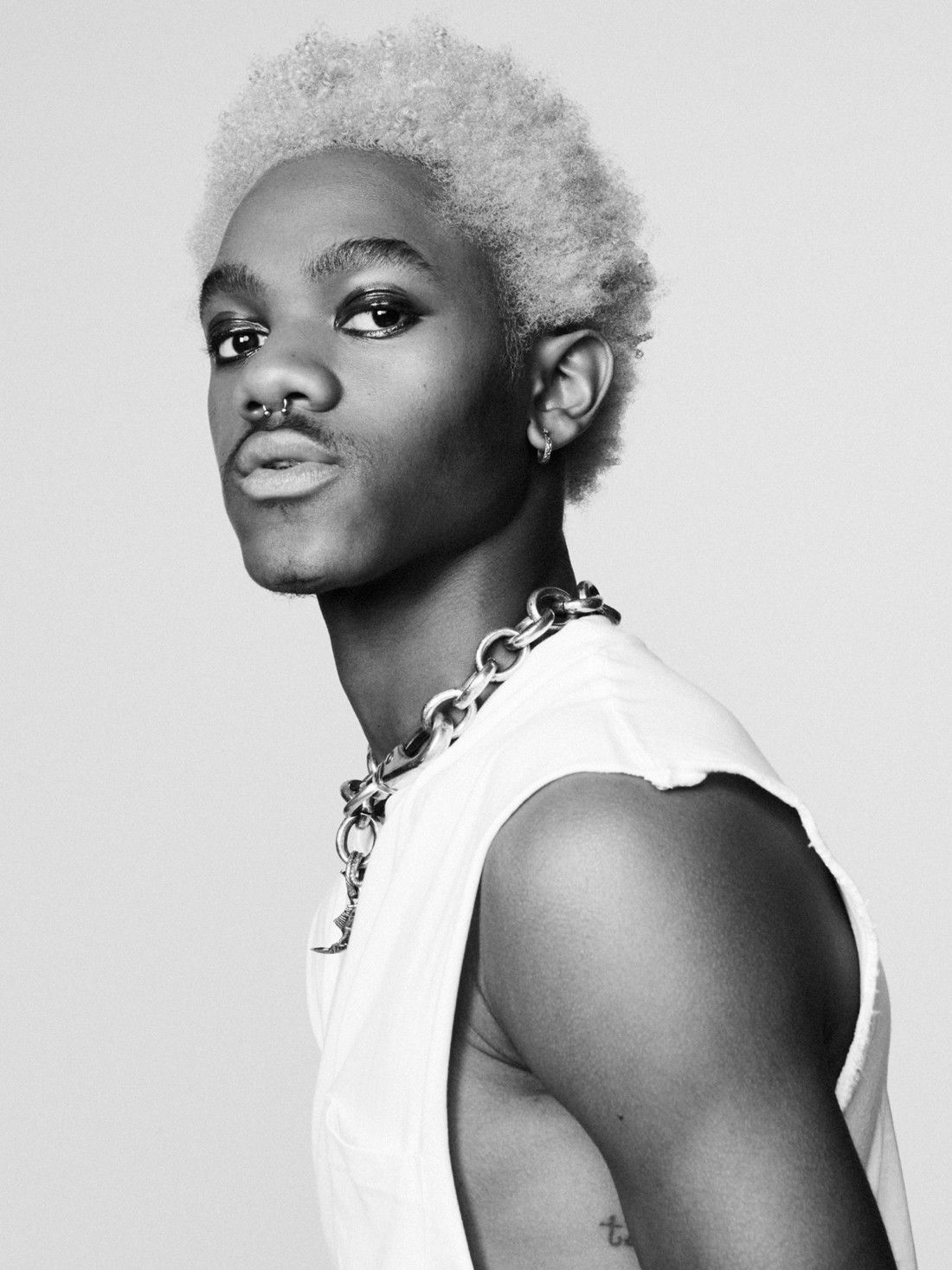
Growing up, I was never understood by my family. They used to blame my femininity on the saying, “oh, you were raised predominantly around females, that’s why you’re like that.” And I always felt like, why can’t I be on a spectrum? I can wake up and feel whatever I want want to feel. Maybe today I feel masculine and tomorrow it’s feminine. Why does it even matter?
Even identifying as strictly male isn’t completely me, to be honest. I usually don’t even think to define myself because I’m everything in between. Which why I look up to David Bowie. He was so ambiguous and did whatever he wanted. He wore makeup. He wore women’s clothing. He just lived. It’s mind-boggling that we still haven’t come to a point where we can accept that others, too, can be just like Bowie.
Rayne Nadurata, 18
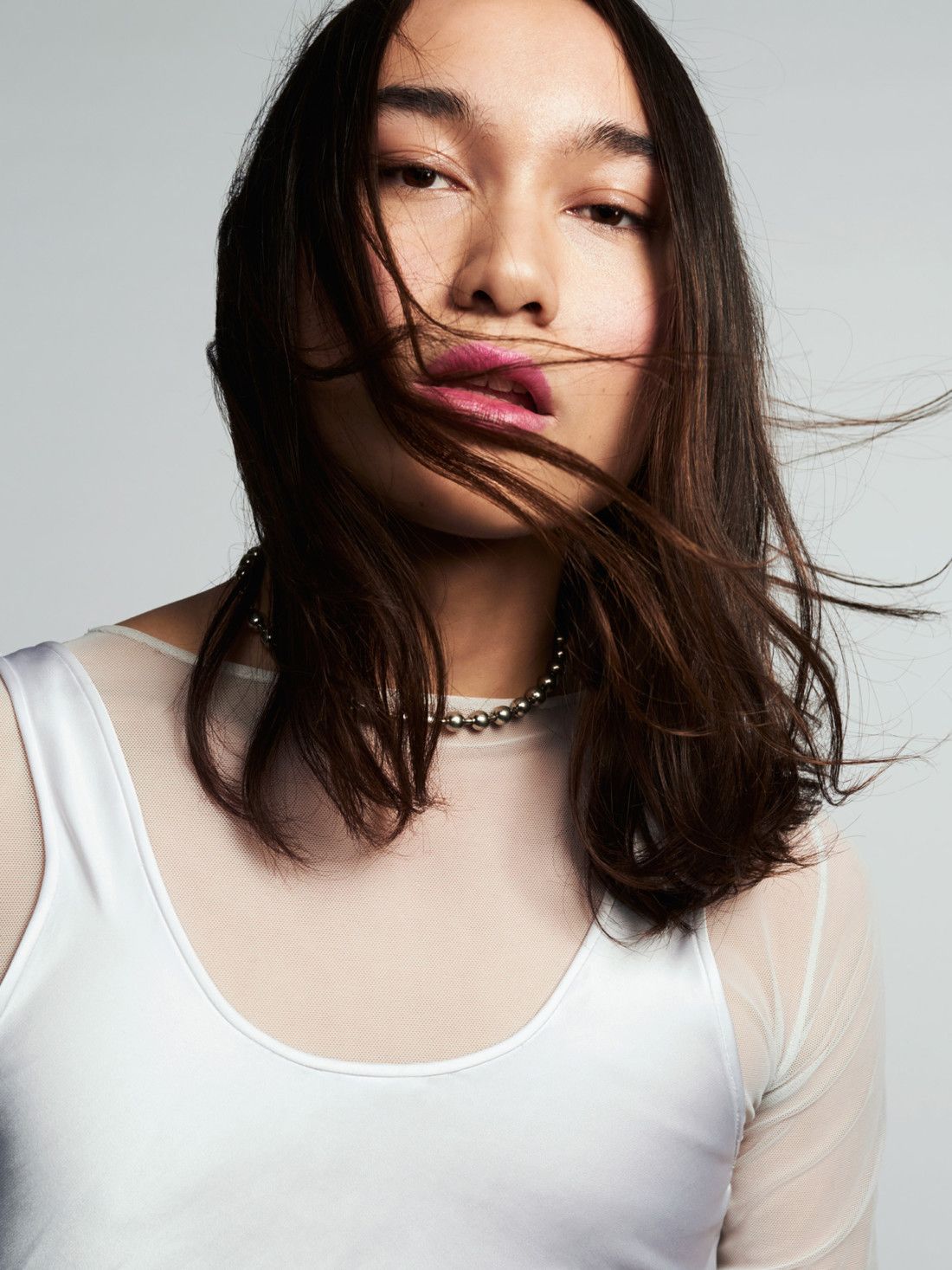
I’m definitely more fluid and I can embody both ends of the spectrum. I like to dabble with both genders but I’m more comfortable in my feminine side because it’s more expressive and open. In terms of labeling, I don’t care about labels. Whatever you call me, you can call me.
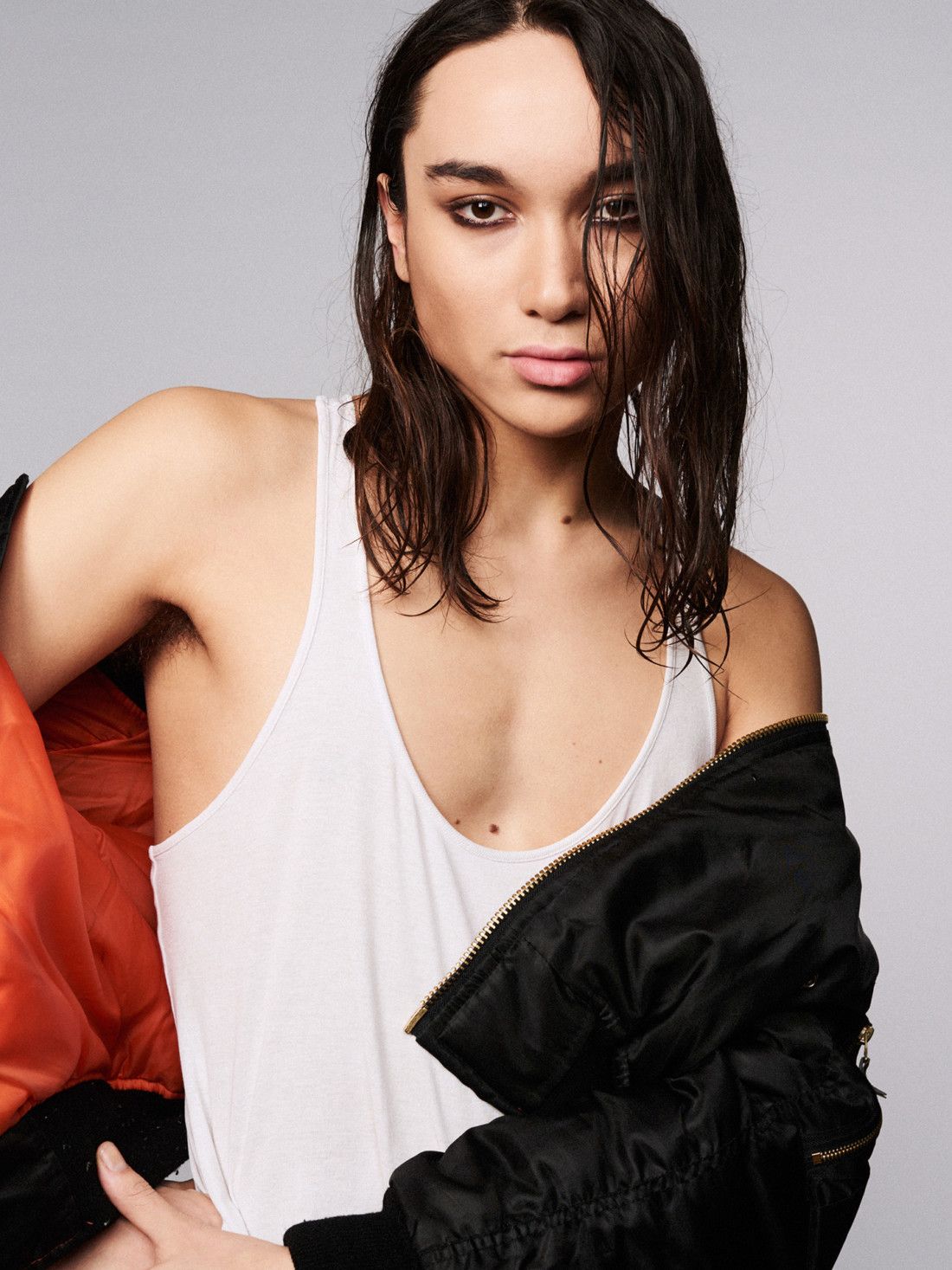
For me, being fluid means that I’m also sexually fluid. I can be attracted to anyone. I don’t think in binaries or sexualities. Instead, I think in energies. There are strong energies present in everyone. Both energies, masculine and feminine are found in everyone. When I think of masculinity I think of aggression, strength and dominance. But that doesn’t necessarily mean that just because you’re submissive you’re more female. You can be a strong, dominant female. And femininity can still be strong as well. Some days I’m vibing my feminine side and in those days I’d expect to be called ‘she’ or a ‘her.’ Today, I’m just Rayne. I’m neutral in my body. I feel comfortable.
I went to the men’s washroom last night, and everyone looked at me. It’s kind of a compliment, though. Guys always think that there’s a girl in there. People think that I’m a chick with a purse because I always have a purse. There are benefits to then going into a women’s washroom because guys bathrooms are filthy. Sometimes though, there will be security guards who tell me I can’t go into the women’s washroom. They think that me being in there makes me a sexual pervert.
In a lot of ways I think it’s because masculinity has become so toxic. I want to crush it at times. It’s designed for men to be “men,” which makes them so self-conscious. I think straight cisgender guys are the most insecure people. They have to be boxed into a single definition and can’t stray from the norm or what they’re attracted to. They can’t express themselves in a different manner. That to me, is so sad. In the future, I want to be a voice for the queer community. I want to make everyone feel comfortable. I want to make a change. It’s coming soon.
Credits.
Director: Georgie Greville DP: Roland Lazarte Photographer: Jai Odell (Trouble Management) Art Director: Elena Miska Makeup: Alicia Marie Campbell (See Management) Hair: Niko Weddle Stylist: Bianca Arielle Bailey Producers: Riley Carithers, Roxanne Doucet

